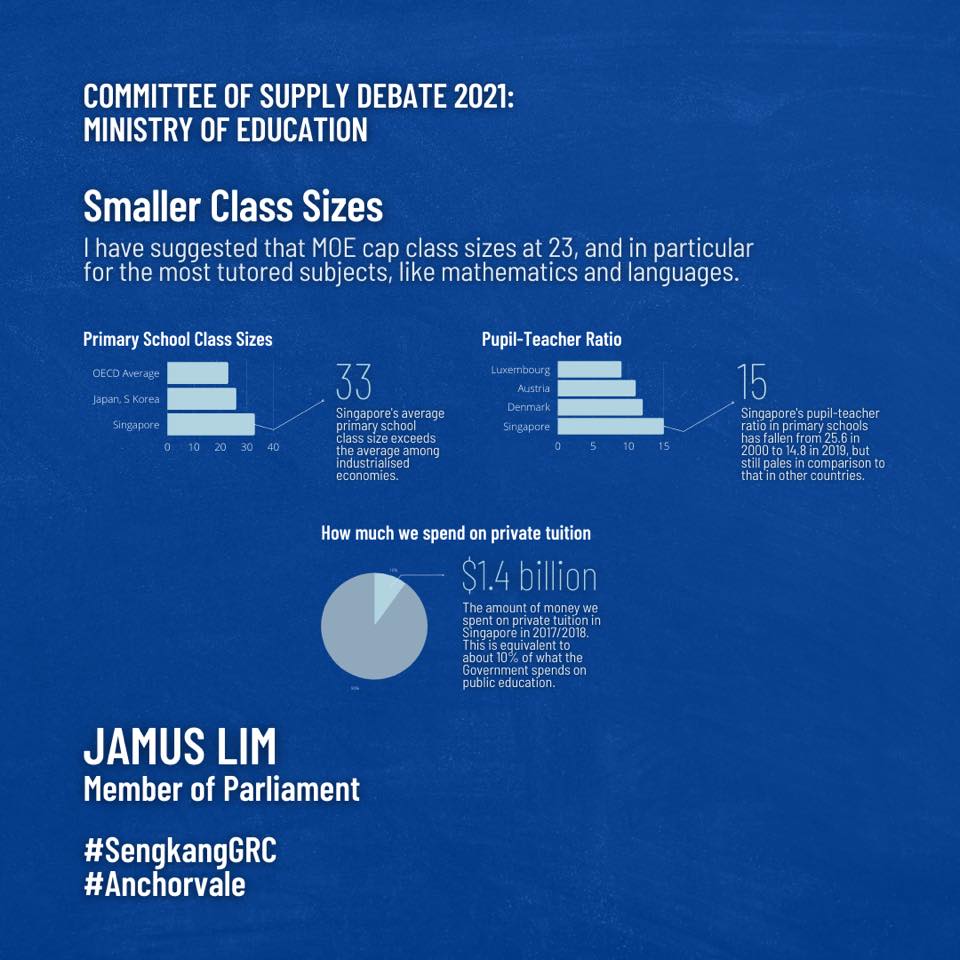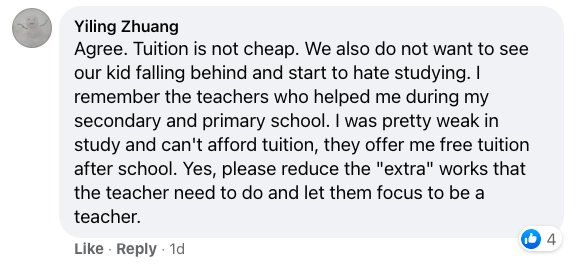Singapore— Last week, on March 3, Workers’ Party’s Dr Jamus Lim brought up the benefits of smaller classes in schools during the Ministry of Education (MOE) Committee of Supply Debate in Parliament.
Dr Lim (Workers’ Party – Sengkang GRC) asked the MOE if Singapore’s class sizes could be limited to 23, which is the average class size in OECD (Organisation for Economic Cooperation and Development) countries.
And while Education Minister Lawrence Wong told him, “I think we are on the same page,” he said that said he hopes MPs understand that Singapore’s class size is larger than in OECD countries not because the country has fewer teachers.
Mr Wong underlined, however, the MOE’s commitment to ensuring Singapore has a high-quality teaching force and a healthy pupil-teacher-ratio.
Dr Lim followed up his question in Parliament with a Facebook post on the same subject on Sunday (March 7), adding an infographic that further focused on the points he had made. Capping class sizes at 23, especially for subjects that students find the most challenging, such as languages and maths, would lower the need for parents to spend on tuition, which he called an “implicit tax” on families.
The infographic showed that in 2017-2018, parents had spent S$1.4 billion on tuition, which is 10 per cent of what the Government spends on public education.

Reducing class sizes in maths and languages could even be done as a pilot project, he wrote in his post, “to explore whether this approach is both appreciated by parents/students, and if it leads to appreciable reductions in tuition needs/improved grades.”
Smaller class sizes would also benefit pupils from lower-income families, leveling the playing field for them.
He wrote in his post that the class sizes had been around 40 students when he was in primary and secondary levels, only getting smaller when he attended junior college.
This has not changed much over the years, with average class sizes in Singapore at 33 students, according to 2019 statistics, one of the highest among advanced countries.
“So while things have improved, we remain very different from other rich countries, including those in Asia. On its face, large class sizes don’t seem like a big deal. After all, we do great in international tests—ranking among the top in student achievement and aptitude—so what’s the problem? One could even go as far as to say that we are getting huge bang for our educational buck,” wrote Dr Lim.
However, he added that this depends on what Singapore believes is the purpose of the classroom.
“Is it to simply deliver the material in the prescribed syllabus, leaving the onus of understanding to the student?
Or is it to foster genuine learning, ensuring no child is left in the dark?… if it is the latter, especially the lower levels, then I think our system falls short.”
He then cited the issue of private tuition, writing that an “enormous amount” is spent especially for maths and languages.
The Sengkang MP added, “But if private tuition is deemed necessary just to stay abreast, then it is no longer truly ‘optional.’ Parents are, in effect, supplementing the education that their kids should otherwise receive in the classroom. This burden is especially pernicious for lower-income households.”
Many netizens, some of whom are teachers themselves, agreed with Dr Lim.



/TISG
Read also: Does Singapore need smaller class sizes — Jamus Lim, Hazel Poa, ask MOE
Does Singapore need smaller class sizes — Jamus Lim, Hazel Poa, ask MOE

